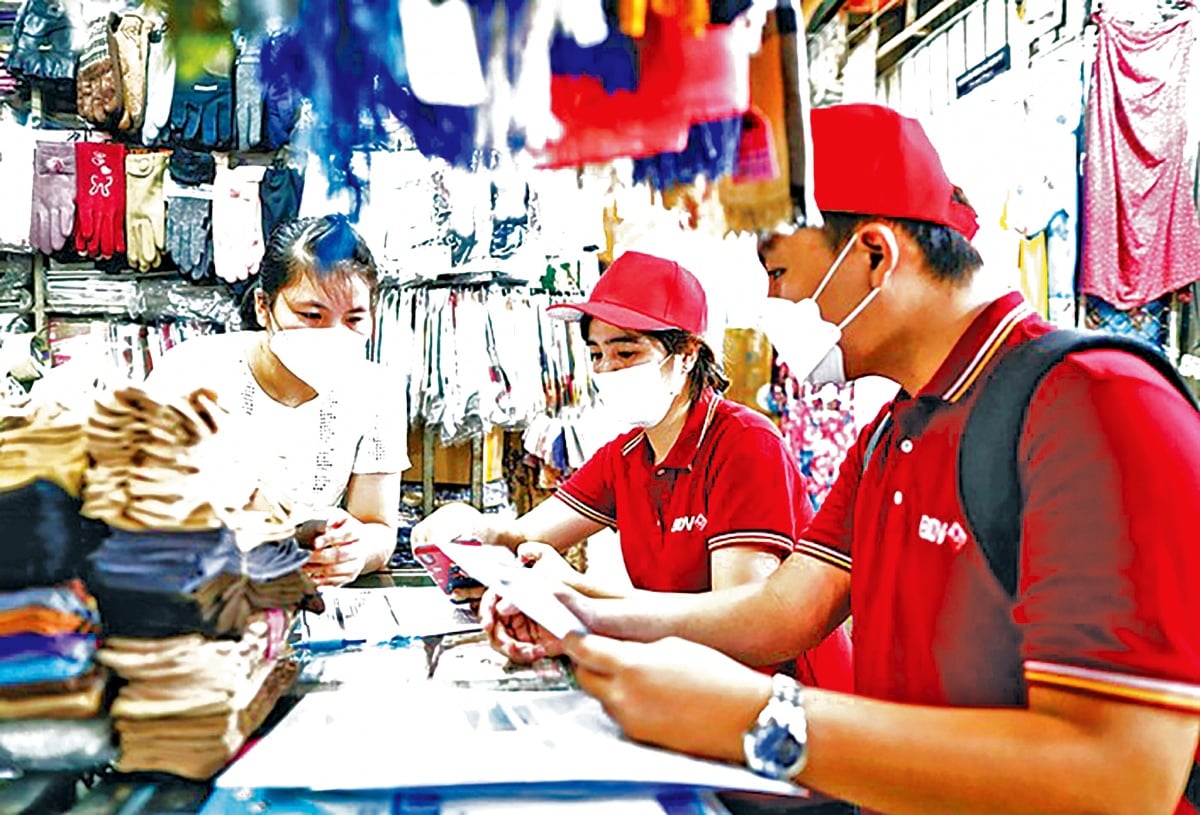Digitalization of payments and connectivity is increasing rapidly.
According to statistics from the State Bank of Vietnam, in the first nine months of 2025, non-cash payments nationwide grew by over 43.3% in the number of transactions and more than 24.2% in value compared to the same period in 2024. Transactions via the internet and mobile devices increased by 51.2% and nearly 37.8% in number, respectively. Meanwhile, payments via QR Code experienced a strong surge with growth rates of 61.6% (in number) and nearly 150.7% (in value), respectively.
Conversely, according to statistics from the Payment Department (State Bank of Vietnam), cash withdrawal transactions via ATMs decreased by nearly 17% (in terms of the number of transactions). This shows that people are strongly shifting to online payment channels thanks to the increasingly close support of digital banking applications integrated on computers and mobile phones.
The figures mentioned above clearly demonstrate the positive results that the banking sector has contributed to the "popular digital literacy" movement – a policy directly launched by the Government with the expectation that it will become a "nationwide, comprehensive, inclusive, and far-reaching" movement.
In fact, records from the State Bank of Vietnam show that by the end of October 2025, after the Government launched the digital literacy campaign, the Governor of the State Bank of Vietnam directed the entire system of credit institutions to implement this campaign with the requirement to link digital skills training with practical work, promote online public services and standardize digital processes in banks, thereby spreading it to the people and businesses.
Statistics from the State Bank of Vietnam show that the connection of identity data through the banking system is now quite common. As of early October 2025, more than 132.4 million individual records and 1.4 million organizational records had been biometrically verified. Currently, 57 credit institutions and 39 payment intermediaries have implemented the integration of citizen identification cards on mobile phones; 28 banks and 4 payment intermediaries have linked social security accounts with bank accounts via VNeID for automatic payments.
From the perspective of credit institutions, according to reports from several commercial banks such as BIDV, Vietcombank, Agribank, VietinBank, TPBank, HDBank,SHB , MB, etc., applications and platforms supporting business digitalization and connecting and supporting payment collection and disbursement for public services are now quite complete and widespread in most sectors.
For example, by September 2025, BIDV 's digital transaction volume reached over 16 million customers with more than 7 million transactions per day. The bank's SmartBanking X application has integrated 2,500 services from 1,500 customers and partners. Vietcombank's VCB Digibank platform currently serves nearly 13 million customers, processing over 6 million transactions per day, and its VCB DigiShop application has helped tens of thousands of businesses adopt electronic invoices while consolidating revenue, expenditure, and payment services into a single integrated application.
 |
| The bank proactively sends staff directly to market stalls to support small traders and business households in using digital payment applications. |
A foundation for expanding inclusive digital finance.
According to assessments from many branches of commercial banks and the Vietnam Bank for Social Policies (VBSP) in Ho Chi Minh City and Dong Nai, programs to popularize digital payments and skills in using mobile devices and applications are spreading rapidly in rural areas with models such as "cashless markets 4.0," "cashless streets," and activities collecting hospital fees, tuition fees, and essential public services for individuals, households, and small businesses.
From a technological infrastructure perspective, experts believe that commercial banks and fintech payment intermediaries are currently leading the way in integrating and connecting applications, sharing data, and providing security and information protection solutions. Compared to other sectors, the inter-sectoral coordination and cooperation capacity of the current credit institution system is considered quite high and proactive, ranging from payments and collection/disbursement services to digital education programs for customers across all economic sectors.
From a safety and information security perspective, the banking sector has allocated over 16% of its IT budget to information security. The warning system has processed approximately 600,000 suspicious accounts, alerted to over 440,000 suspicious transactions, and prevented the potential loss of over 1.6 trillion VND… These figures provide a foundation for people to increasingly trust digital channels and digital applications connected to credit institutions.
Furthermore, it's important to recognize that for the inclusive digital finance sector, digital education programs by banks like Agribank and the Vietnam Bank for Social Policies (VBSP) are playing a crucial role. Agribank aims to successfully train 500 digital ambassadors and digital key personnel in remote areas by 2026. Meanwhile, the VBSP system has also widely implemented digital education programs for rural customers and collaborated with Mastercard in developing digital education products and projects at its branches, bringing digital skills to millions of poor households, women, and micro-enterprises. In addition, the widespread impact of the Mobile Money pilot program, directed by the State Bank of Vietnam, has enabled nearly 10.9 million telecommunication accounts to connect for small transactions, helping tens of millions of people in rural and mountainous areas access and use digital financial applications conveniently and safely.
Source: https://thoibaonganhang.vn/ngan-hang-dan-dat-binh-dan-hoc-vu-so-173005.html






![[Photo] Prime Minister Pham Minh Chinh presides over a meeting on private sector economic development.](/_next/image?url=https%3A%2F%2Fvphoto.vietnam.vn%2Fthumb%2F1200x675%2Fvietnam%2Fresource%2FIMAGE%2F2025%2F12%2F20%2F1766237501876_thiet-ke-chua-co-ten-40-png.webp&w=3840&q=75)































































































Comment (0)